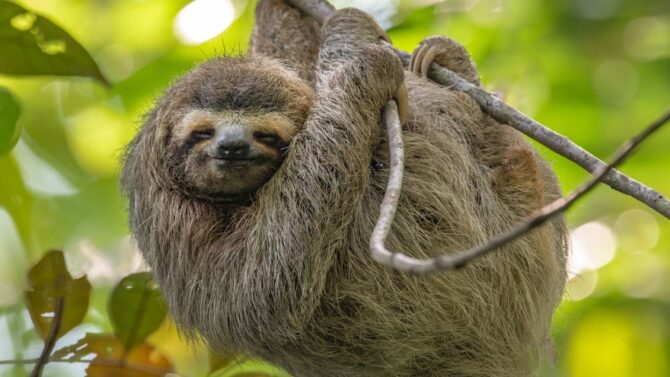Lazy animals is not the ideal first thought that comes to mind when we think of the intricate behaviors vastly represented in the Animal Kingdom.
However, these animals show surprising level of laziness that we can’t help but be bemused by. We review how these diverse creatures takes the art of relaxation to the extreme, while still surviving the unforgiving and harsh reality of life in the wild.
Lazy animals in the wild include the cuckoo bird, the lemur, pigs, the echidna, giant pandas, and even pythons.
Let’s take a look at 20 of these animals. Some of them would be a surprise!
20 Lazy Animals In The World
1. Pygmy Blue Tongue Lizard

- Scientific Name: Tiliqua adelaidensis
- Conservation Status: Endangered
- Sleeping Length: 10 hours
Fully known as the Adelaide pygmy blue tongue lizard, this is a member of the skink family known as Scincidae. It is found in Australia, ranging from Kapunda to Peterborough.
As the name shows, this lizard comes with a blue tongue and is small. It was once thought to be extinct but has since been rediscovered in 1992.
The pygmy blue tongue lizard is very elusive, which explains why it was considered extinct for a long time. It hardly steps out of the spider burrow it lives in, even to feed.
This lizard rather sits with its head upwards and mouth opened, waiting for the next meal. This is also how it gets its water.
Laziness is ingrained in the blue tongue lizard’s nature, but it is good for survival. The lifestyle protects our elusive creatures from predators.
2. Lion

- Scientific Name: Panthera Leo
- Conservation Status: Vulnerable
- Sleeping Length: 18 to 20 hours
The king of animals is probably not the first animal you might classify as lazy. Lions are very capable apex predators and even fast when running after prey.
That being said, they deserve the spot on this list. Lions love to sleep, probably due to the energy exerted in chasing prey. The hot environment might also play a role. Lions can snooze for 20 hours, sometimes up to 24!
Lions used to be more widespread, but they are now limited to Africa and India. In these locations are the two extant species, the African lion and the Asian lion, both classified under the genus Panthera. Human activities have led to a significant population decline of lions.
3. Sloth
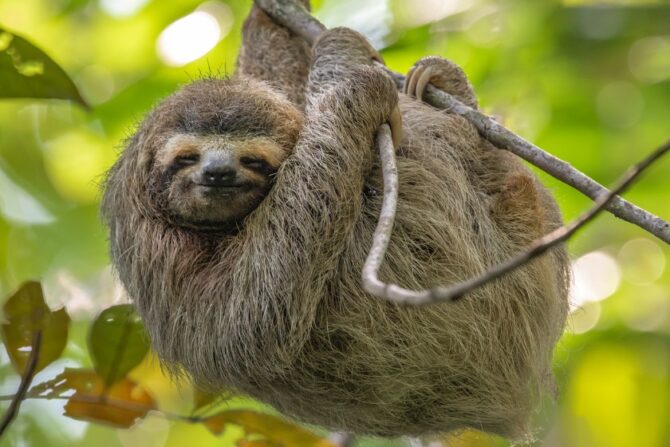
- Scientific Name: Folivora
- Conservation Status: Not Extinct
- Sleeping Length: 20 hours
We use the term “sloth” to describe a lazy person, a nod to this animal and its behavior. The sloth is a group of mammals found in the suborder Folivora. There used to be both arboreal and terrestrial sloths, but the latter has gone extinct.
The extant sloths are the tree species. You’d find them in rainforests of South and Central America.
Sloths sleep up to 20 hours a day, and even when awake they are very slow. Popular movies like Zootopia have made good fun of these animals, but in reality, that’s just how they are.
Other languages also capture this by the names sloths are called. The French termed them paresseux while in Spanish, they are called perezoso.
This animal’s laziness is well seen in how it treats its children. Females stay with the newborns, but lose some that fall off the trees because of their unwillingness to climb down.
We use the term “sloth” to describe a lazy person, a nod to this animal and its behavior. The sloth is a group of mammals found in the suborder Folivora.
There used to be both arboreal and terrestrial sloths, but the latter has gone extinct. The extant sloths are the tree species. You’d find them in rainforests of South and Central America.
Sloths sleep up to 20 hours a day, and even when awake they are very slow. Popular movies like Zootopia have made good fun of these animals, but in reality, that’s just how they are. Other languages also capture this by the names sloths are called. The French termed them paresseux while in Spanish, they are called perezoso.
This animal’s laziness is well seen in how it treats its children. Females stay with the newborns, but lose some that fall off the trees because of their unwillingness to climb down.
4. Opossum

- Scientific Name: Didelphimorphia
- Conservation Status: Not Extinct
- Sleeping Length: 18 to 20 hours
An opossum is a group in the marsupial order Didelphimorphia, composed of 93 species in 18 genera. It originated in South America but also extends to the northern part.
There are only one species found in the United States and Canada, the Virginia opossum. It can be simply called ‘possum.
The opossum sleeps between 18 and 20 hours a day, and while awake they move slowly. In this way, they are similar to sloths.
Opossums find it hard to move from one place to another. Once they find an ideal spot, they remain there. These animals are the ultimate couch potatoes.
5. Domestic cat

- Scientific Name: Felis catus
- Conservation Status: Domesticated
- Sleeping Length: 16 hours
Any cat owner reading this wouldn’t be surprised. Cats are adorable pets, but they are also champions at laziness.
This is a possible reason for the stereotypical old woman stroking a cat. Because of their laziness, these animals make good pets for seniors.
Some breeds are quite active, but that may only last for about 8 hours, and after that, it’s a snooze.
The domestic cat is a member of the Felidae family, relatives to wilder felines like lions. Domestic cats are found worldwide and come in different breeds. These lazy, pampered creatures are well-loved by many pet parents.
6. Hippopotamus

- Scientific Name: Hippopotamus amphibius
- Conservation Status: Vulnerable
- Sleeping Length: 16 to 20 hours
The hippopotamus is a semi-aquatic animal found in Sub-saharan Africa. It is a large mammal, weighing up to 3,000 pounds.
Hippos are related to marine mammals like whales, dolphins, and porpoises, but they are not fully aquatic. They can be found floating on rivers, lakes, and swamps.
Given their size, the lazy habit isn’t a surprise. Hippos sleep up to 20 hours a day, usually in groups. They can nap either on land or in water.
Even their feeding pattern reflects laziness. Hippos can spend up to 5 hours in a particular spot, feeding.
7. Python

- Scientific Name: Python
- Conservation Status: Not Extinct
- Sleeping Length: 18 hours
The python is a genus of large, non-venomous snakes known for their constricting habits. It belongs to the family Pythonidae. Pythons live in Africa and Asia, dwelling in habitats like rainforests, grasslands, woodlands, and savannas. Pythons are feared…and lazy.
These animals can sleep up to 18 hours a day, and they are not better awake. They move slowly, unlike speedy species like the black mamba.
One reason for the slowness is how long it takes for a meal to digest. Pythons swallow their prey whole, feeding only once a week. Shedding also took a lot for pythons.
8. Owl Monkey
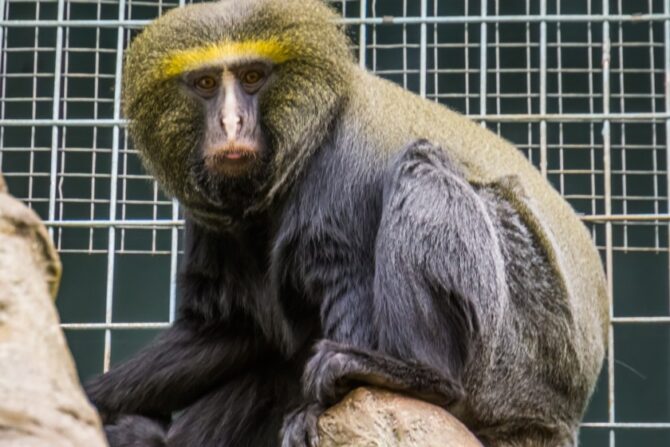
- Scientific Name: Actus
- Conservation Status: Not extinct
- Sleeping Length: 18 hours
The owl monkey is named so because of its wide eyes, while its scientific name is Actus which means “earless”. The latter was given because of the noticeable lack of ears. The owl monkey is a native of South America and the Panamas. Its habitat encompasses forests of different kinds like tropical and cloud forests.
This animal is also called the night monkey as it is the only nocturnal true monkey. While its counterparts are very active, owl monkeys sleep long during the day.
Its slumber extends to 18 hours. Their active lives start after dark, with the father being the caregiver. They live in monogamous families.
9. Echidna

- Scientific Name: Tachyglossidae
- Conservation Status: Not extinct
- Sleeping Length: 12 hours
The echidna is also known as the spiny anteater. It is known for its oviparous nature as it is one of the only mammals that lay eggs. The other is the platypus.
There are four echidna species still alive today. They are the short-beaked, the western long-beaked, the eastern long-beaked, and Sir David’s long-beaked echidna.
These animals have a sleeping length of 12 hours. While not as long as the aforementioned creatures, the sleep time is enough to classify it as lazy.
There’s a good reason for this. Echidnas live in sunny Australia and can’t cope with the heat. Ergo, they stay hidden during the day and only come out at night to find food.
10. Giant Panda

- Scientific Name: Ailuropoda melanoleuca
- Conservation Status: Vulnerable
- Sleeping Length: 12 hours
The giant panda has fast become associated with Chinese culture, and it is endemic to China. It is not a true carnivore, though it falls under the Carnivora order.
Its diet comprises more bamboo sticks. As we’ll soon see, this is what makes the giant panda lazy. Preferred habitats include temperate forests.
These bears sleep 12 hours a day, though not at a stretch. Sleep time is usually divided into 3-hour segments.
The bamboo pandas eat low-nutrient meals, so they consume more than 40 pounds a day to stay alive. They need a lot of rest after this.
11. Nurse Shark

- Scientific Name: Ginglymostoma cirratum
- Conservation Status: Vulnerable
- Sleeping Length: 12 hours
Aren’t sharks supposed to be vicious creatures? The nurse shark didn’t get the memo. It earned the name “couch potato of the sea” due to its habit of lying on the ocean floor for as long as 12 hours.
Other shark species have to move fast to breathe, but the nurse shark doesn’t require such. It simply pumps water through the gills as it lies there.
This creature has a wide range, living in both tropical and subtropical waters. They can stay on coral reefs, seagrass flats, and rocky areas.
The nurse shark is a predator, but it doesn’t go about it like other species. Rather than hunt, they suck up food, almost like whales.
12. Pig

- Scientific Name: Sus domesticus
- Conservation Status: Domesticated
- Sleeping Length: 12 to 14 hours
Is it surprising that pigs are lazy? Though they are intelligent creatures, they also live a slow, lazy lifestyle. These mammals are popular livestock animals and also pets, having been domesticated years back.
Pigs are widespread, being in every continent except Antarctica. These animals live in farmlands or human dwellings, depending on if it’s livestock or a pet.
Pigs sleep up to 14 hours, and they seem to love it just as much as they love lying in the mud. They tend to lie together, cuddled up with other pigs.
This is because they are social animals, though they don’t form large herds. They also feed as much as they sleep, which is an easy life, really.
13. Lemur
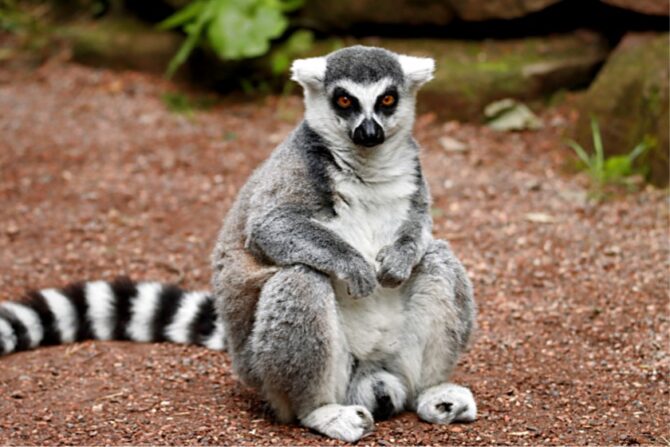
- Scientific Name: Lemuroidea
- Conservation Status: Not Extinct
- Sleeping Length: 16 hours
The lemur is the common name of primates in the superfamily Lemuroidea. There are up to 100 extant species divided into 15 genera and 8 families.
The most popular species is the ring-tailed lemur species. These animals are recognized by their large eyes, long snouts, and small sizes.
Lemurs are related to other primates and share some resemblances. However, there are no evolutionary ties with apes and monkeys.
Lemurs sleep up to 16 hours daily, preferring to do this in the company of others. They form sleep pods when they need to rest, mainly to conserve energy especially when resources are scarce.
14. Common Cuckoo

- Scientific Name: Cuculus canorus
- Conservation Status: Least Concern
- Sleeping Length: _____
The common cuckoo bird is a species in the Cuculidae family, which in turn falls under the Cuculiformes order. It is related to the roadrunner, the Coucal, and the anis.
The common cuckoo lives in Europe, Africa, and Asia, migrating in between them. Its main habitats are open lands.
The common cuckoo is considered lazy, not because of its sleeping pattern, but due to its brood parasite habits. Rather than build its nest, the common cuckoo lays eggs on the nest of other birds. This is the animal’s version of abdicating responsibility.
15. Koala

- Scientific Name: Phascolarctos cinereus
- Conservation Status: Vulnerable
- Sleeping Length: 20 hours
The koala is a native of Australia, and while it is sometimes called the koala bear, it is not a part of the bear (Ursidae) family. It is classified as a marsupial in the Phascolarctidae family.
Koalas inhabit open forests and woodlands. It is classified as vulnerable by the IUCN and is endemic in its range.
Koalas sleep up to 20 hours, which is enough to conclude that they are lazy. Their waking hours fall between 2 and 6 hours. Koalas feed on a fiber-rich diet which takes time to digest. This causes fatigue.
16. Armadillo

- Scientific Name: Cingulata
- Conservation Status: Not extinct
- Sleeping Length: 18 to 19 hours
An armadillo is a group of mammals in the order Cingulata, under which there are two families and 21 species.
All armadillos are natives of the Americas, living in different areas and habitats. They are known for their hard armory shells that may be bulletproof. The armadillo is also a lazy creature.
This animal sleeps up to 19 hours in a day, a behavior that experts don’t fully understand. It is not a social animal, preferring to stay in their burrows. You’d only find an armadillo out during evening hours, looking for food. After that, it’s another long sleep.
17. Squirrel

- Scientific Name: Sciuridae
- Conservation Status: Not Extinct
- Sleeping Length: 14 hours
The squirrel is a member of the Sciuridae family, classified into tree, ground, and flying squirrels. These rodents are widespread, occurring in the Americas, Africa, and Eurasia.
There’s also a population in Australia, but that was introduced by humans. Squirrels are arboreal and range in size.
Sleep time goes up to 16 hours. Like the panda, this need for a long sleep is due to the squirrel’s diet. It feeds on a diet rich in protein, carbohydrates, and fat. All this leads to tiredness, hence the sleep. Squirrels sleep in nests.
The ground squirrel and tree squirrel are either diurnal or crepuscular, while the flying squirrel is nocturnal. This influences when they sleep.
18. Tiger
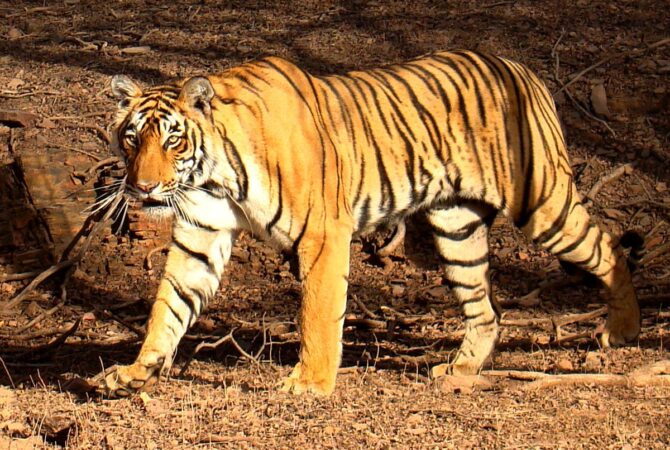
- Scientific Name: Panthera tigris
- Conservation Status: Endangered
- Sleeping Length: 18 to 20 hours
Alongside the king of animals, the famed king of the jungle is also a lazy bone. A terrifying wild cat, the tiger doesn’t seem like an animal that should be classified on the same list as a sloth. However, its laziness is clear from the sleeping habit.
Tigers sleep up to 20 hours a day, much like lions and sloths. It is more active than the latter, though, as it spends its waking hours hunting.
When it gets its prey, it eats first to its satisfaction. Right after that, it sleeps close to the remaining food to stop another predator from stealing its catch.
19. Brown bat
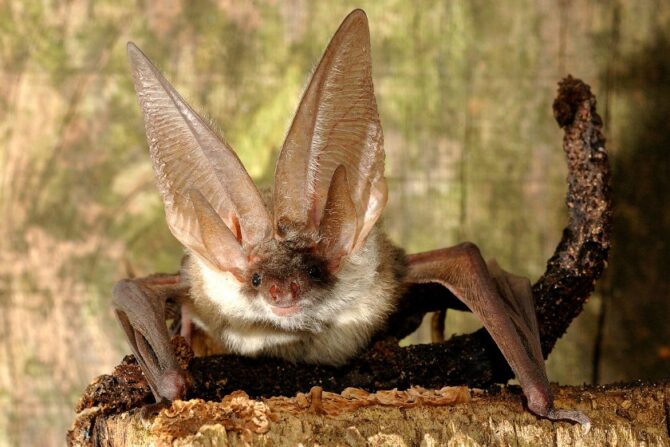
- Scientific Name: Myotis lucifugus
- Conservation Status: Endangered
- Sleeping Length: 20 hours
Fully known as the little brown bat, this mammal is a member of the Myotis genus. Animals under the genus are characterized by mouse-like ears, which explains the common name “mouse-eared bat”.
The little brown bat also has this trait, and it is very similar to its relatives. One other trait of this bat is its laziness.
The little brown bat sleeps for 20 hours a day. This leaves only 4 hours of activity. It also hibernates for a long time, getting to 6 months in a year.
20. Hamster

- Scientific Name: Cricetinae
- Conservation Status: Not Extinct
- Sleeping Length: 14 hours
A hamster is a group of rodents from the Cricetinae family. There are 19 hamster species split into 7 genera. Hamsters are very popular rodents, possibly because they make great pets and are very popular amongst pet parents. The wild variants inhabit grasslands in Europe and Asia.
New hamster pet parents are often surprised to see how much hamsters sleep.
These animals take out 14 hours to sleep, which isn’t much fun for the overenthusiastic owner who wants to see their pet play. That being said, it’s a normal behavior that helps them survive in the wild.
Final Thoughts
Lazy animals are generally characterized by the long time they sleep. Some are also quite slow when awake, and then we have the cuckoo bird that abandons parental responsibilities.
The laziness trait is part of their nature and day-to-day living. The most common lazy animal is arguably the sloth, but now we know there are more animals, including ferocious predators.
